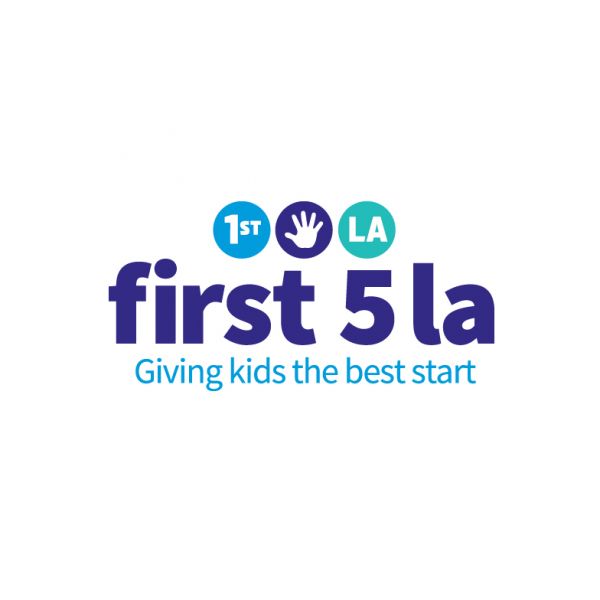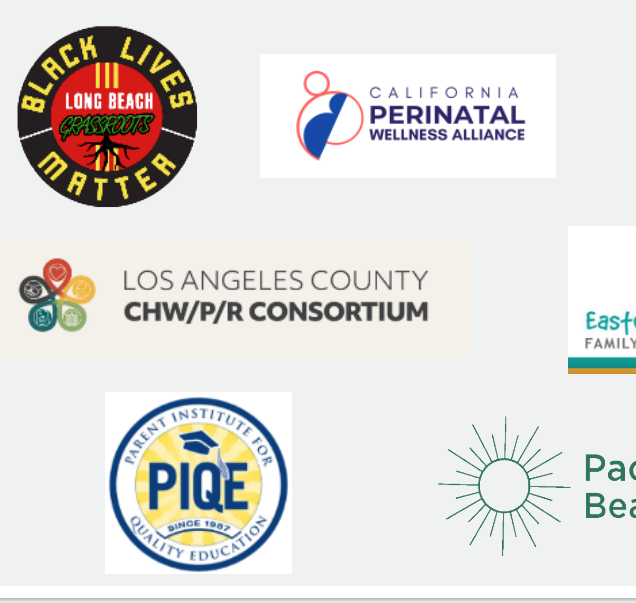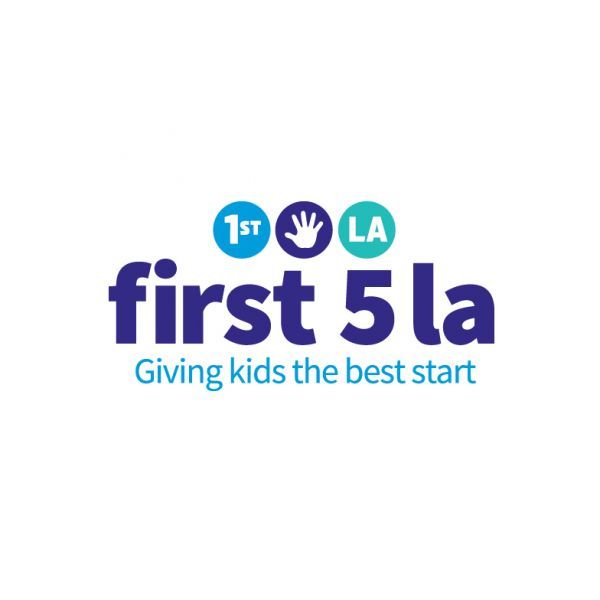July 28, 2022
California made history on June 30, 2022, when the largest state budget to date was signed into law by Gov. Gavin Newsom. The record-breaking 2022-23 state budget projects a $307.9 billion spending plan, utilizing $234.4 billion in state general funds, along with $37.2 billion in total reserves and a total surplus of $101.4 billion.
Now in effect because California’s fiscal year began on July 1, the budget is the first in the state’s history to feature more than $300 billion in spending.
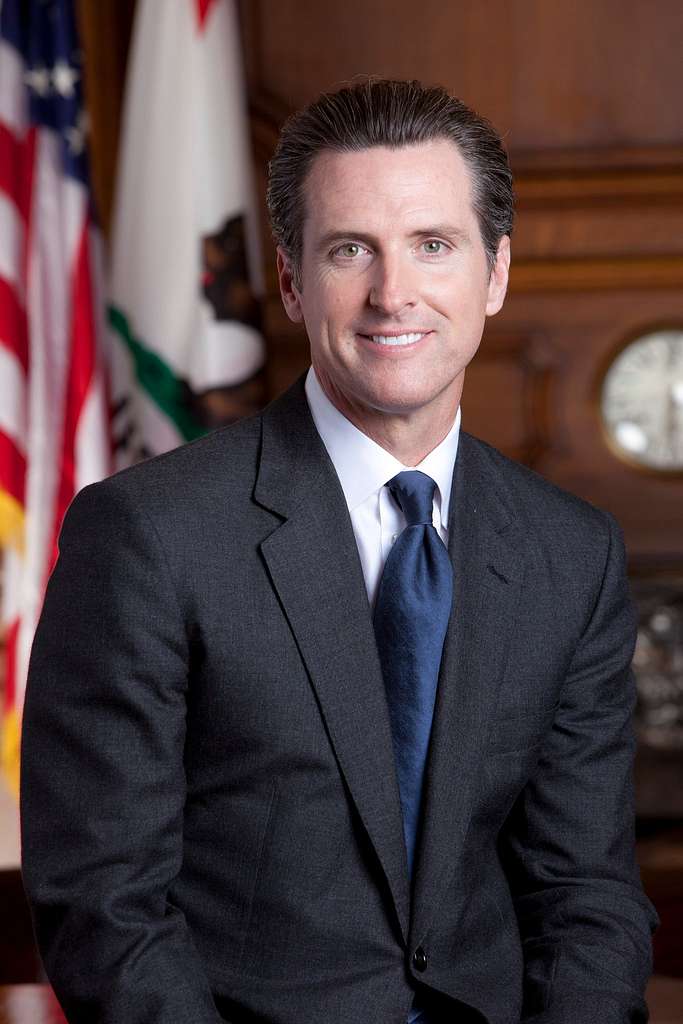 Determining how to spend the record surplus, especially related to providing direct financial support to Californians, was the most significant point of negotiation between Newsom and lawmakers. In the May Revise, Newsom proposed sending $400 checks to registered car owners to help alleviate the impacts of record high gas prices. The Legislature, however, believed this would leave too many families behind, including any resident who does not own a car, and instead proposed to send $200 checks to all eligible taxpayers earning less than $125,000 for individuals and $250,000 for families.
Determining how to spend the record surplus, especially related to providing direct financial support to Californians, was the most significant point of negotiation between Newsom and lawmakers. In the May Revise, Newsom proposed sending $400 checks to registered car owners to help alleviate the impacts of record high gas prices. The Legislature, however, believed this would leave too many families behind, including any resident who does not own a car, and instead proposed to send $200 checks to all eligible taxpayers earning less than $125,000 for individuals and $250,000 for families.
Ultimately, state leaders agreed to a $9.5 billion inflation relief package that will provide an estimated 17.5 million California taxpayers with up to $1,050 in direct financial support. This final approach, called the “Better for Families Tax Refund,” more closely reflects the Legislature’s vision and drops Newsom’s emphasis on car ownership.
A second area of negotiation between lawmakers and Newsom related to the duration and sustainability of funding for programs and services. Newsom’s May Revise framework heavily featured one-time spending or proposals that would receive funding on a temporary basis.
Specifically, Newsom sought to utilize 99 percent of the total discretionary surplus on short-term or time limited spending, citing a potential downswing in the state’s economy and a recession as a reason to avoid on-going spending obligations that may not be able to be supported in future budgets. In contrast, the Legislature’s budget provided many programs with multi-year or on-going funding, with lawmakers framing their proposal as striking a better balance between delivering necessary fiscal relief to families and small businesses, while still building reserves to help California weather possible economic downturns or future budgetary challenges.
Broadly, the final enacted budget features few new ongoing obligations, utilizing 93 percent of the total discretionary surplus for one-time appropriations. In certain instances, the budget does provide ongoing funding now, but with triggers that, according to the enacted budget, are “subject to a determination in the spring of 2024 that the General Fund can support these policies over the multi-year forecast.” As such, the continuation of certain appropriations provided in the 2022-2023 budget depend on revenue estimates remaining strong in future years.
Two significant First 5 LA priorities included in the 2022-2023 state budget are subject to these triggers. First, the enacted budget provides $20 million in ongoing funding to support continuous Medi-Cal eligibility for children under the age of 5. However, this is “contingent on determination of sufficient state resources,” meaning future budgetary challenges or revenue shortfalls would trigger the elimination of promised ongoing funding as soon as 2024. An expansion of the direct financial supports provided to families through the CalWORKs program will also end if California sees reduced revenue.
Across the last two years, California has collected record revenues, allowing for previously unprecedented spending. Now, with inflation high, economic growth in the state appearing to slow and the Legislative Analyst’s Office (LAO) warning of potential recession, 2022-2023 could be the last year of massive surpluses, creating uncertainty about future state budgets. Investments made through this year’s budget provide funding for a variety of supports that can benefit young children and their families. However, time-limited funding could easily — or in the case of triggers — automatically be cut or eliminated if policymakers do not prioritize them or if economic conditions in the state deteriorate.
In addition to greater uncertainty around economic conditions in the state, the Gann Limit will also continue to be a consideration in development and passage of future state budgets. This 1979 law requires the state government to return money to California taxpayers when spending reaches beyond a certain level, constraining current spending to that of the 1978-1979 budget year, with some adjustments based on population levels growth, inflation, and income levels. With the record level of surplus available, policymakers throughout the year warned that California could breach the Gann Limit. At that point, according to the LAO, every $1 of unanticipated revenue would feature $1.60 in spending requirements. As a result, policymakers would likely need to cut funding from existing programs even if the overall budget could support them. Ultimately, the 2022-2023 budget came in $11 billion below the Gann Limit, but policymakers said the state could again be in danger of breaching the limit next year.
Finally, the state budget includes more than $200 million in funding to ensure continued access to abortion and reproductive health care, demonstrating California’s leadership on abortion rights, even as states across the country curtail or outright ban it. This expenditure did not feature in any previous budget proposal this year, reflecting the new policy landscape created when the Supreme Court overturned Roe v. Wade in late June.
The final 2022-2023 state budget includes funding for the following First 5 LA’s priorities:
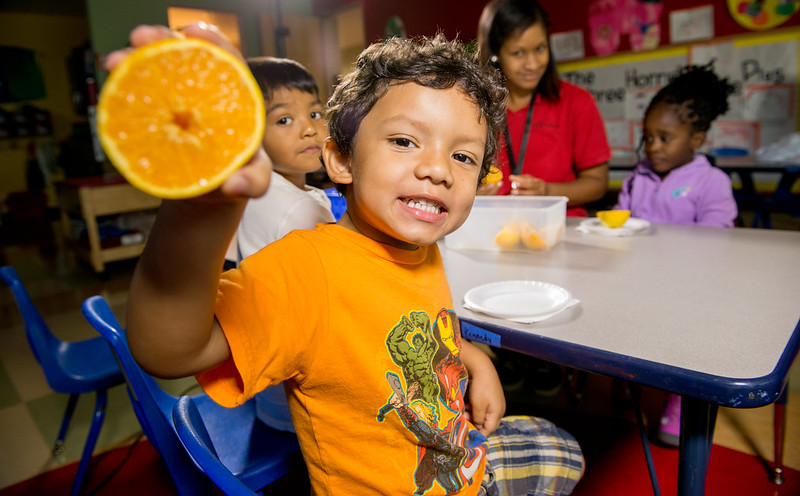
Children have high quality early care and education experiences before kindergarten
The state budget includes:
.
- $157.3 million one-time funding ($21.3 million General Fund, $136 million federal funds) for the continued waiving of family fees for state subsidized child care and preschool programs through next fiscal year. The waiving of family fees was a priority for both the Early Care and Education (ECE) Coalition and First 5 LA during this year’s Advocacy Day.
- The budget also allocates $21.8 million ($10.5 million one-time Proposition 98 (Prop 98) General Fund, $10.8 million one-time non-Prop 98 General Fund) to waive family fees specifically for children who participate in the California State Preschool Program (CSPP).
- $114 million ($6 million General Fund, $108 million federal funds) to extend the hold harmless policy for child care and state preschool providers, allowing them to base reimbursement on enrollment rather than attendance. This provision started at the onset of the COVID-19 pandemic and will continue until June 30, 2023.
- $100.5 million one-time federal funds for the acquisition, construction, development, and renovation of child care facilities. While this appropriation falls short of First 5 LA and the ECE Coalition’s ask during this year’s Advocacy Day, it nonetheless represents a step forward in addressing the facilities shortage across California.
- $100.3 million one-time General Fund set aside to fulfill negotiations with Child Care Providers United regarding health and retirement benefits for home-based child care providers. First 5 LA has regularly advocated for additional increases to provider rates that were first established in the 2021 Budget Act. Now, even with the 2022-2023 budget finalized, advocacy for raising rates will remain a top priority, especially as negotiations continue between Child Care Providers Union and the Newsom Administration, and the Rate & Quality Stakeholder Workgroup develops recommendations on the methodology for establishing equitable reimbursement rates for California.
- $166.2 million in Prop 98 General Fund to meet the full-year costs of California State Preschool Program (CSPP) rate increases that started on January 1, 2022.
- Several investments to support the implementation and expansion of Universal Transitional Kindergarten (UTK) across the state:
- $614 million in ongoing Prop 98 to support the first year of UTK, as originally enacted in the 2021 state Budget Act.
- $383 million (Prop 98, General Fund) for an additional certificated or classified staff person in every UTK classroom, reducing the student-to-adult ratio. The budget also approves expanding eligibility for UTK. Together, these policies will allow additional children to be served within more conducive learning environments.
- $5.1 billion in General Fund for K-12 school facilities, which may be used for constructing and retrofitting classrooms for preschool and transitional kindergarten facilities.
- $300 million in one-time Prop 98 funds for additional grants for preschool planning and implementation, including UTK, for all local education agencies.
- An additional $550 million one-time General Fund for the California Preschool, Transitional Kindergarten and Full-Day Kindergarten Facilities Grant Program. The budget also includes $100 million one-time General Fund with 2021-2022 funds. This appropriation can be used to construct new school facilities or retrofit existing ones for the purposes of transitional kindergarten, full-day kindergarten, or preschool classrooms.
- $485 million in ongoing funding ($172.3 million General Fund, $312.7 million Prop 98) to increase adjustment factors for students with exceptional needs, dual language learners, and 3-year-olds enrolled in CSPP.
- Several investments to better support children with disabilities within early learning, including:
- $250 million in one-time funding for the Inclusive Early Education Expansion Program, a program headed by the California Department of Education (CDE) that intends to increase access to early learning and care programs for children with disabilities.
- $2 million one-time General Fund for state preschool assessment tools to include early identification for learning disabilities.
- Authorizing CDE to create a tool to identify learning delays for children in preschool through the second grade.
- Expanding eligibility for CSPP to families who earn the state median income, allowing more children access to vital early learning resources. For 2021-2022, CSPP’s yearly income eligibility cap for a family of four was $89,297, compared to the state median income in 2022 for a family of the same size of $98,644 per year. The budget also expands the eligibility for state preschool from 12- to 24-months.
- Investments to ensure that some of California’s most vulnerable children have access to child care, including:
- $35 million in ongoing General Fund to support and expand access to the Emergency Child Care Bridge Program, which aims to increase the number of children in foster care placed in home-based family child care settings.
- $20 million General Fund for grants to increase the capacity of Alternative Payment programs.
- $10 million one-time General Fund to support First 5 California’s partnership with the Department of Public Health on the Books for Children Program, which is intended to increase grade level reading proficiency among young children.
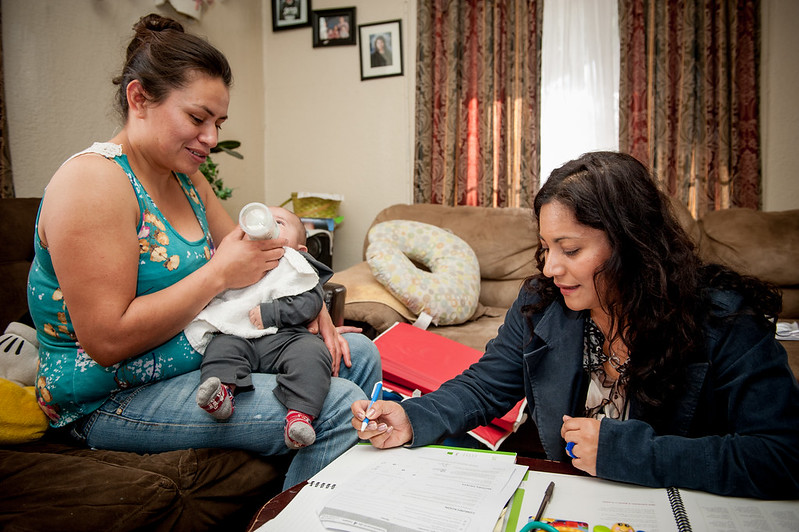
Children receive early developmental supports and services, and are safe from abuse, neglect, and other trauma
The state budget includes:
.
- $37.5 million ongoing to expand the California Home Visiting Program, and $12.5 million ongoing to expand the Black Infant Health Program. Advocating for these funding expansions was a key priority for First 5 LA during this year’s Advocacy Day meetings with state lawmakers.
- $10 million in 2023-2023 and $20 million ongoing, contingent on sufficient state resources in future years, to provide children under the age of 5 with continuous Medi-Cal coverage. Advocating for this policy was a key priority for First 5 LA during its Advocacy Day meetings with state lawmakers, and funding to provide continuous Medi-Cal eligibility was not included in either Newsom’s January budget or May Revise.
- Increasing Medi-Cal rates for doula services from $450 per birth to $1,094. The doula benefit through Medi-Cal is currently set for an implementation date of January 1, 2023.
- $700 million through June 30, 2027, including $140 million available in 2022-2023, for Equity and Practice Provider Payments. This funding will provide payment to Medi-Cal Manage Care Plans and providers to advance health equity, reduce COVID-19 related care disparities, and improve quality measures in children’s preventative health and maternity health.
- $75 million annually for two years to support the Health Equity and Racial Justice Fund, which provides funding to community-based organizations that work to reduce health disparities and address systemic racism within the public health system.
- $30 million General Fund and $30 million one-time federal funds to continue providing families with Medi-Cal Health Enrollment Navigators through 2025-2026.
- Adopts Trailer Bill Language to discontinue the Child Health and Disability Program (CHDP), as of July 1, 2025, and instead expand presumptive Medi-Cal eligibility for children.
- $5.5 million ongoing to establish the California Pregnancy Associated Review Committee, to review pregnancy-related deaths in the state, analyze causes of maternal morbidity and provide recommendations for preventing maternal mortality.

Families optimize their child’s development
The state budget includes:
.
- A total of $1.11 billion to increase the maximum grant amount families can receive through CalWORKs. Starting in October 2022 and continuing through September 30, 2024, the grant amount will increase by 21 percent over the current baseline, or an additional $194 per month for families. After that two year period, the increase will drop to 11 percent over today, and that level will continue on an ongoing basis. State leaders say they will revisit this policy in 2024 to determine if future budgets can support making the 21 percent increase permanent.
- $65.5 million in 2022-2023 and $82.6 million in 2023-2024 and ongoing to promote more effective transitions, when a child turns 3 between Individual with Disabilities Act (IDEA) Part C, which provides early intervention supports to children through state Regional Centers, and Part B special education preschool programs. This funding will specifically help reduce Regional Center service coordinator to child caseload ratios, provide resources to preschools to increase inclusion of children served by Regional Centers and establish IDEA specialists at each Regional Center.
- $6.5 million General Fund in 2022-2023 and $29.4 million General Fund in 2024-2025 and on-going to change Early Start qualification thresholds from a 33 percent delay to a 25 percent delay in specified assessment areas. In California, the level of a child’s developmental delay in cognitive; physical and motor, including vision and hearing; communication; social/emotional; and adaptive development determines eligibility for Early Start services at Regional Centers. By lowering the delay threshold necessary to receive early intervention services, families will be able to access these supports more quickly, and in turn, help their child be better able to minimize or overcome a developmental delay. This funding will also help the role of Fetal Alcohol Syndrome as a risk factor for intellectual and/or developmental delay.
- $4.7 million one-time funding to suspend Regional Center family fees for 2022-2023.
- $510,000 in 2022-2023 and $492,000 in 2023-2024 to support implementation of SB 65, the “Momnibus” bill of maternal health policies passed last year.
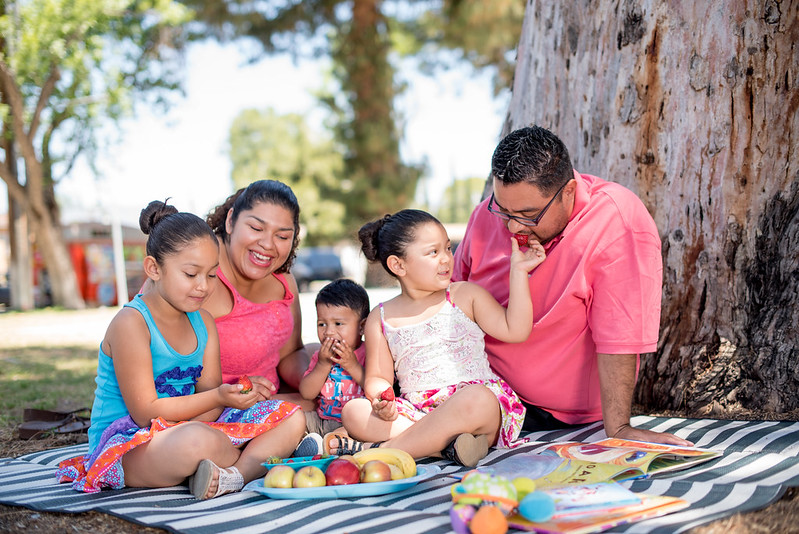
Priorities aligned with First 5 LA’s long-term systems outcomes, Los Angeles County regional priorities, and Best Start Community Change agendas
The state budget includes:
.
- $2 billion for a multiyear affordable housing package, including investments in the Multifamily Housing Program, Housing Accelerator Program, Farmworker Housing Program, Accessory Dwelling Unit financing program, and Veterans Housing and Homelessness Prevention Program.
- $700 million for Encampment Resolution grants over two years, to help local governments with resolving critical encampments and transitioning individuals into permanent housing.
- $596 million in ongoing Prop 98 funds to provide universal access to school meals for all K-12 students. This amount complements the 2021 state Budget Act appropriation of $54 million ongoing Prop 98 funding for these purposes. The budget also includes an additional $611.8 million ongoing Prop 98 General Fund to support school meal infrastructure by augmenting the state meal reimbursement rate sufficient to maintain meal reimbursement rates beginning in 2022-2023.
- An additional $60 million over two years for the Farm to School program to connect local producers and school food buyers; increase food education opportunities in classrooms, gardens, and on farms; and to engage schools and students with the agricultural community.
- $112 million one-time General Fund in 2022-2023 and $52 million one-time General Fund in 2023-2024 to support food banks to purchase, store, and transport food grown or produced in California. School districts and food banks were at the front lines of feeding students and families during the COVID-19 crisis, including several within the Best Start communities.
- $550 million over two years for broadband infrastructure, for the California Department of Technology (CDT) to support the completion of the Broadband Middle-Mile Initiative. Broadband access continues to be a community identified priority within several Best Start Communities.
- $230 million for the Office of Community Partnerships and Strategic Communications to continue supporting COVID-19 vaccine-related public education and outreach, with an additional $93 million to prioritize vaccination of children under 5, additional boosters for eligible populations over 50, and continuation of mobile vaccination sites through the end of 2022-2023. Communities of color have been disproportionately impacted by COVID-19, and vaccine distribution must continue to be a priority.
- $175 million for the Immigrant Rapid Response program, to provide additional support for migrant arrivals at the California’s southern border, and funding for other emergent issues, with an additional $10 million one-time General Fund for the California Immigrant Justice Fellowship.
- $835.6 million ($626.1 million General Fund) in 2023-2024 and $2.6 billion ($2.1 billion General Fund) annually after that, to expand full-scope Medi-Cal eligibility to all income-eligible adults aged 26 through 49 regardless of immigration status. Beginning no later than January 1, 2024, Medi-Cal will be available to all income-eligible Californians.

Next Steps
With their agreement on the final state budget, the Legislature and the Newsom Administration have concluded all planned budget negotiations for 2022-2023. However, even with most budgetary decisions now complete, additional trailer bills, authorizing language and “junior” budget bills are likely to materialize throughout the remaining months of the legislative session.


